ENiM 5 - 2012 (ISSN 2102-6629)
Sommaire
Pages
1-6
 Publication d’une statuette fragmentaire d’Amenmes, fils de Paouia (fin de la XIXe dynastie et début de la XXe), conservée à l’Oriental Museum, Université de Durham. Cet objet complète le dossier de ce personnage déjà bien connu.
Publication d’une statuette fragmentaire d’Amenmes, fils de Paouia (fin de la XIXe dynastie et début de la XXe), conservée à l’Oriental Museum, Université de Durham. Cet objet complète le dossier de ce personnage déjà bien connu.
 Publication of a fragmentary statuette of Amenmes, son of Ouia (end of the XIXth dynasty and beginning of the XXth), kept in the Oriental Museum, University of Durham. Amenmes is already known by the other documents.
Publication of a fragmentary statuette of Amenmes, son of Ouia (end of the XIXth dynasty and beginning of the XXth), kept in the Oriental Museum, University of Durham. Amenmes is already known by the other documents.
Pages
7-18
 Au IIIe siècle avant Jésus-Christ, plusieurs cités de Grèce décidèrent d’adopter le nom d’une souveraine égyptienne d’origine macédonienne. Deux souveraines furent concernées : Arsinoé II Philadelphe et Arsinoé III Philopator. L’acte de changer de nom – la métonomasie – n’était pas un acte anodin pour ces cités ancestrales ; les facteurs qui y préludèrent et les conséquences qui en résultèrent sont étudiés dans cet article.
Au IIIe siècle avant Jésus-Christ, plusieurs cités de Grèce décidèrent d’adopter le nom d’une souveraine égyptienne d’origine macédonienne. Deux souveraines furent concernées : Arsinoé II Philadelphe et Arsinoé III Philopator. L’acte de changer de nom – la métonomasie – n’était pas un acte anodin pour ces cités ancestrales ; les facteurs qui y préludèrent et les conséquences qui en résultèrent sont étudiés dans cet article.
 Several cities of Greece decided to renew their denominations with the name of a macedonian queen in the third century BC. Two rulers were concerned: Arsinoe II Philadelphos and Arsinoe III Philopator. The act of changing its name was not insignificant for these ancestral
cities. This article deals with the reasons and the consequences of this phenomenon.
Several cities of Greece decided to renew their denominations with the name of a macedonian queen in the third century BC. Two rulers were concerned: Arsinoe II Philadelphos and Arsinoe III Philopator. The act of changing its name was not insignificant for these ancestral
cities. This article deals with the reasons and the consequences of this phenomenon.
Pages
19-30
 Le but de l’article est à la fois de présenter une synthèse générale du contenu du papyrus du Brooklyn Museum n° 35.1446 et de préciser le statut des quelque 95 personnes qui figurent sur la liste du verso. Il s’avère que celles-ci sont toutes d’origine syro-palestinienne et que leur venue en Égypte s’inscrit dans le cadre d’une politique d’immigration soutenue par les rois des XIIe-XIIIe dynasties.
Le but de l’article est à la fois de présenter une synthèse générale du contenu du papyrus du Brooklyn Museum n° 35.1446 et de préciser le statut des quelque 95 personnes qui figurent sur la liste du verso. Il s’avère que celles-ci sont toutes d’origine syro-palestinienne et que leur venue en Égypte s’inscrit dans le cadre d’une politique d’immigration soutenue par les rois des XIIe-XIIIe dynasties.
 The aim of this paper is to present a general summary of the contents of P. Brooklyn Museum n° 35.1446 and to clarify the status of some ninety-five people who appear in the list on the verso. It turns out that all of them are Asiatics and that their entry into Egypt was part of an immigrapion policy upheld by the Kings of the XIIth-XIIIth Dynasties.
The aim of this paper is to present a general summary of the contents of P. Brooklyn Museum n° 35.1446 and to clarify the status of some ninety-five people who appear in the list on the verso. It turns out that all of them are Asiatics and that their entry into Egypt was part of an immigrapion policy upheld by the Kings of the XIIth-XIIIth Dynasties.
Pages
31-37
 Analyse d’une épithète obscure provenant du temple d’Esna. Deux nouvelles attestations permettent la traduction suivante : « la voûte céleste n’est qu’une partie de lui / d’elle » (gb.t ?y ?.t jm=f / jm=s). Des expressions semblables se rapportant aux membres divins sont également analysée.
Analyse d’une épithète obscure provenant du temple d’Esna. Deux nouvelles attestations permettent la traduction suivante : « la voûte céleste n’est qu’une partie de lui / d’elle » (gb.t ?y ?.t jm=f / jm=s). Des expressions semblables se rapportant aux membres divins sont également analysée.
 Analysis of an obscure epithet found at Esna temple. Two newly published attestations establish the following translation: “the celestial firmament is but a part of him / her (gb.t ?y ?.t jm=f / jm=s).” Similar expressions involving divine limbs are discussed.
Analysis of an obscure epithet found at Esna temple. Two newly published attestations establish the following translation: “the celestial firmament is but a part of him / her (gb.t ?y ?.t jm=f / jm=s).” Similar expressions involving divine limbs are discussed.
Pages
39-60
 Les temples gréco-romains de Thébaïde, d’Edfou et de Dendara, font occasionnellement état de graphies Khaset-DP / Khaset-TP pour évoquer la Haute et la Basse-Égypte.
L’étude des sources montre que l’on a affaire à un toponyme unique, se référant, dans les deux cas, à Dep de Bouto (Tep en démotique) ; appliqué au Sud, il procède d’une transposition de géographie sacrée du Nord sur le Sud, explicitement établie par le contexte général des documents.
Excursus : présentation synoptique de listes géographiques énumérant des déesses Hathor.
Les temples gréco-romains de Thébaïde, d’Edfou et de Dendara, font occasionnellement état de graphies Khaset-DP / Khaset-TP pour évoquer la Haute et la Basse-Égypte.
L’étude des sources montre que l’on a affaire à un toponyme unique, se référant, dans les deux cas, à Dep de Bouto (Tep en démotique) ; appliqué au Sud, il procède d’une transposition de géographie sacrée du Nord sur le Sud, explicitement établie par le contexte général des documents.
Excursus : présentation synoptique de listes géographiques énumérant des déesses Hathor.
 The Greek-roman temples of the region of Thebes, Edfu and Dendara occasionally attest some written forms Khaset-DP / Khaset-TP, evoking Upper and Lower-Egypt.
The study of the sources shows that we deal with a unique toponym, referring in both cases to Dep of Buto (Tep in demotic) ; concerning the South, it proceeds from a transposition of a sacred geography from North to South, which is clearly demonstrated by the general context of the documents.
Excursus: synopsis of geographical lists showing Hathor goddesses.
The Greek-roman temples of the region of Thebes, Edfu and Dendara occasionally attest some written forms Khaset-DP / Khaset-TP, evoking Upper and Lower-Egypt.
The study of the sources shows that we deal with a unique toponym, referring in both cases to Dep of Buto (Tep in demotic) ; concerning the South, it proceeds from a transposition of a sacred geography from North to South, which is clearly demonstrated by the general context of the documents.
Excursus: synopsis of geographical lists showing Hathor goddesses.
Pages
61-71
 Publication de deux éléments d’une porte de grenier au nom du roi Sénakht-en-Rê Ahmès récemment découverts près du temple de Ptah à Karnak. Les éléments mis au jour permettent de préciser l’identité de ce roi de la XVIIe dynastie dont seul le nom de couronnement était connu par des listes royales posthumes et de lever définitivement les incertitudes concernant son nom de naissance : Ahmès.
Les désignations Sénakht-en-Rê Taâ Ier et Sénakht-en-Rê Siamon doivent donc aujourd’hui être abandonnées. La proposition d’identification de la tombe de ce roi dans le rapport de la commission d’enquête ramesside du Papyrus Abbott doit également être écartée. Il n’y a qu’un seul roi dont le nom de naissance est Taâ : Séqen-en-Rê. Le nom de fils de Rê de Sénakhat-en-Rê conduit à rattacher ce roi à la famille royale ahmoside de la fin de la XVIIe dynastie et du début de la XVIIIe dynastie dont il est à ce jour le plus ancien représentant connu. Enfin, les documents qui ne portent que le nom de fils de Rê « Ahmès » peuvent désormais être attribués soit à Sénakht-en-Rê Ahmès, soit à Neb-Pehety-Rê Ahmosis.
Publication de deux éléments d’une porte de grenier au nom du roi Sénakht-en-Rê Ahmès récemment découverts près du temple de Ptah à Karnak. Les éléments mis au jour permettent de préciser l’identité de ce roi de la XVIIe dynastie dont seul le nom de couronnement était connu par des listes royales posthumes et de lever définitivement les incertitudes concernant son nom de naissance : Ahmès.
Les désignations Sénakht-en-Rê Taâ Ier et Sénakht-en-Rê Siamon doivent donc aujourd’hui être abandonnées. La proposition d’identification de la tombe de ce roi dans le rapport de la commission d’enquête ramesside du Papyrus Abbott doit également être écartée. Il n’y a qu’un seul roi dont le nom de naissance est Taâ : Séqen-en-Rê. Le nom de fils de Rê de Sénakhat-en-Rê conduit à rattacher ce roi à la famille royale ahmoside de la fin de la XVIIe dynastie et du début de la XVIIIe dynastie dont il est à ce jour le plus ancien représentant connu. Enfin, les documents qui ne portent que le nom de fils de Rê « Ahmès » peuvent désormais être attribués soit à Sénakht-en-Rê Ahmès, soit à Neb-Pehety-Rê Ahmosis.
 Publication of two elements of a granary door bearing the name of king Senakhtenre Ahmose recently discovered near the temple of Ptah at Karnak. The inscriptions allow this king of the seventeenth dynasty, previously only known through the coronation name in later king-lists, to be identified more precisely. They also finally resolve uncertainties about his birth name: Ahmose.
The designations of Senakhtenre Tao I or Senakhtenre Siamun for this king must be abandoned. Suggestions for identifying the king’s tomb in the Ramesside report of investigations in the Theban necropolis recorded in Papyrus Abbott must also be rejected. Only one king bears the birth name Tao: Seqenenre. That Ahmose is the son of Re name of Senakhtenre leads to the conclusion that this king must be a member of the Ahmoside royal family of the late seventeenth and early eighteenth dynasties, of which he is to date the oldest known representative. Finally, documents that bear only the son of Re name “Ahmose” can now be attributed to either Senakhtenre Ahmose or Nebpehtyre Ahmose.
Publication of two elements of a granary door bearing the name of king Senakhtenre Ahmose recently discovered near the temple of Ptah at Karnak. The inscriptions allow this king of the seventeenth dynasty, previously only known through the coronation name in later king-lists, to be identified more precisely. They also finally resolve uncertainties about his birth name: Ahmose.
The designations of Senakhtenre Tao I or Senakhtenre Siamun for this king must be abandoned. Suggestions for identifying the king’s tomb in the Ramesside report of investigations in the Theban necropolis recorded in Papyrus Abbott must also be rejected. Only one king bears the birth name Tao: Seqenenre. That Ahmose is the son of Re name of Senakhtenre leads to the conclusion that this king must be a member of the Ahmoside royal family of the late seventeenth and early eighteenth dynasties, of which he is to date the oldest known representative. Finally, documents that bear only the son of Re name “Ahmose” can now be attributed to either Senakhtenre Ahmose or Nebpehtyre Ahmose.
Pages
73-102
 Depuis les temps anciens jusqu’aux périodes tardives, les Anciens Égyptiens, pour décrire le ciel, distinguaient le « ciel du sud » et le « ciel du nord », aussi bien dans les textes que dans l’iconographie. Les représentations de la voûte céleste qui apparaissent sur des plafonds ou des couvercles de sarcophages permettent d’identifier les astres principaux du ciel dit « méridional » comme étant ceux qui se déplacent sur l’écliptique avec, essentiellement, les étoiles-décans qui balisent le parcours quotidien et annuel du soleil. Le ciel « septentrional », quant à lui, est le domaine des constellations boréales, visibles toute l’année et, pour cette raison, dénommées par les Égyptiens « Celles qui ne connaissent pas la destruction ». L’opposition « spatiale » s’accompagne d’une opposition « mythologique » : les constellations du ciel du nord sont liées à l’idée d’immortalité car on ne les voyait jamais disparaître dans la Douat. À l’inverse, les ensembles stellaires situés plus au sud, dont les prototypes sont Sirius et Orion, qui sont absents du ciel un certain temps au cours de l’année, sont comparés aux vivants : ils « vivent » lorsqu’ils brillent au firmament, et « meurent » lors de leur invisibilité, qui est ressentie comme un séjour dans la Douat. Ces observations expliquent de nombreuses allusions retrouvées dans les Textes de Pyramides.
Depuis les temps anciens jusqu’aux périodes tardives, les Anciens Égyptiens, pour décrire le ciel, distinguaient le « ciel du sud » et le « ciel du nord », aussi bien dans les textes que dans l’iconographie. Les représentations de la voûte céleste qui apparaissent sur des plafonds ou des couvercles de sarcophages permettent d’identifier les astres principaux du ciel dit « méridional » comme étant ceux qui se déplacent sur l’écliptique avec, essentiellement, les étoiles-décans qui balisent le parcours quotidien et annuel du soleil. Le ciel « septentrional », quant à lui, est le domaine des constellations boréales, visibles toute l’année et, pour cette raison, dénommées par les Égyptiens « Celles qui ne connaissent pas la destruction ». L’opposition « spatiale » s’accompagne d’une opposition « mythologique » : les constellations du ciel du nord sont liées à l’idée d’immortalité car on ne les voyait jamais disparaître dans la Douat. À l’inverse, les ensembles stellaires situés plus au sud, dont les prototypes sont Sirius et Orion, qui sont absents du ciel un certain temps au cours de l’année, sont comparés aux vivants : ils « vivent » lorsqu’ils brillent au firmament, et « meurent » lors de leur invisibilité, qui est ressentie comme un séjour dans la Douat. Ces observations expliquent de nombreuses allusions retrouvées dans les Textes de Pyramides.
 From very early times down to the late periods, the Ancient Egyptians describing the firmament distinguished the “southern sky” and the “northern sky” in their texts as well as in their iconography. Representations of the sky that appear on ceilings or coffin lids permit to identify the main stars in the sky called “southern” as those that move along the ecliptic comprising, in essence, the decanal stars that mark the daily and annual course of the sun. The northern sky, on the other hand, is the domain of the boreal constellations that are visible throughout the year, which is why the Egyptians called them “Those who do not know destruction”.The “spatial” opposition is accompanied by a “mythological” one: the constellations of the northern sky are tied to the notion of immortality because they can never be seen to vanish into the Duat. Inversely, the constellations situated further to the south, with Sirius and Orion as prototypes, which are absent from the sky during a certain lapse of time in the year, are compared to the living: they “live” while they sparkle in the night firmament and “die” during their invisibility, which is perceived as a passage in the Duat. These observations explain a great variety of mythological allusions issuing from the Pyramid Texts.
From very early times down to the late periods, the Ancient Egyptians describing the firmament distinguished the “southern sky” and the “northern sky” in their texts as well as in their iconography. Representations of the sky that appear on ceilings or coffin lids permit to identify the main stars in the sky called “southern” as those that move along the ecliptic comprising, in essence, the decanal stars that mark the daily and annual course of the sun. The northern sky, on the other hand, is the domain of the boreal constellations that are visible throughout the year, which is why the Egyptians called them “Those who do not know destruction”.The “spatial” opposition is accompanied by a “mythological” one: the constellations of the northern sky are tied to the notion of immortality because they can never be seen to vanish into the Duat. Inversely, the constellations situated further to the south, with Sirius and Orion as prototypes, which are absent from the sky during a certain lapse of time in the year, are compared to the living: they “live” while they sparkle in the night firmament and “die” during their invisibility, which is perceived as a passage in the Duat. These observations explain a great variety of mythological allusions issuing from the Pyramid Texts.
Pages
103-113
 Analyse lexicographique du terme tȝḥw.t dans l’expression kȝ.t tȝḥw.t mentionnĂ©e dans le conte des deux frères.
Analyse lexicographique du terme tȝḥw.t dans l’expression kȝ.t tȝḥw.t mentionnĂ©e dans le conte des deux frères.
 Lexicographical analysis of the word tȝḥw.t in the expression kȝ.t tȝḥw.t mentioned in the Tale of Two Brothers.
Lexicographical analysis of the word tȝḥw.t in the expression kȝ.t tȝḥw.t mentioned in the Tale of Two Brothers.
Pages
115-117
 L’encyclopédie byzantine de Suidas (Souda), du Xe siècle, nous offre, sous la forme « Nephersôphris », la seule attestation connue du prænomen d’Akhénaton dans les sources grecques. Cette mention de l’hérétique en plein Moyen-Âge, prenant l’aspect d’un court proverbe évoquant sa légende noire, prouve que le souvenir du pharaon d’Amarna avait bel et bien survécu, de manière obscure, à travers plus de deux mille ans d’histoire.
L’encyclopédie byzantine de Suidas (Souda), du Xe siècle, nous offre, sous la forme « Nephersôphris », la seule attestation connue du prænomen d’Akhénaton dans les sources grecques. Cette mention de l’hérétique en plein Moyen-Âge, prenant l’aspect d’un court proverbe évoquant sa légende noire, prouve que le souvenir du pharaon d’Amarna avait bel et bien survécu, de manière obscure, à travers plus de deux mille ans d’histoire.
 The Suda, a 10th century Byzantine encyclopedia, provides us with the only mention of Akhenaten’s praenomen in Greek sources (Nephersophris = Neferkheperura). This evocation of the heretical king, in the shape of a proverb focusing on the unlucky power of his name, proves that Akhenaten’s dark memory had survived by some unknown ways, over more than 2000 years.
The Suda, a 10th century Byzantine encyclopedia, provides us with the only mention of Akhenaten’s praenomen in Greek sources (Nephersophris = Neferkheperura). This evocation of the heretical king, in the shape of a proverb focusing on the unlucky power of his name, proves that Akhenaten’s dark memory had survived by some unknown ways, over more than 2000 years.
Pages
119-131
 Forme superlative de l’impur dans le lexique de l’Égypte ancienne, Dw constitue à ce titre une expression majeure du mal. Il n’est alors guère surprenant qu’un véritable arsenal soit disposé sur les points stratégiques du temple égyptien, incarnation des notions de pureté et de sacré, afin de maintenir cette menace hors du temenos.
Forme superlative de l’impur dans le lexique de l’Égypte ancienne, Dw constitue à ce titre une expression majeure du mal. Il n’est alors guère surprenant qu’un véritable arsenal soit disposé sur les points stratégiques du temple égyptien, incarnation des notions de pureté et de sacré, afin de maintenir cette menace hors du temenos.
 Superlative form of the impure in the lexicon of ancient Egypt, Dw constitutes as such a major expression of the evil. It is then hardly surprising that a real arsenal is arranged on the strategic points of the Egyptian Temple, embodiment of the notions of purity and sacredness, to maintain this threat outside the temenos.
Superlative form of the impure in the lexicon of ancient Egypt, Dw constitutes as such a major expression of the evil. It is then hardly surprising that a real arsenal is arranged on the strategic points of the Egyptian Temple, embodiment of the notions of purity and sacredness, to maintain this threat outside the temenos.
Pages
133-149
 Publication de deux fragments de reliefs provenant de la nécropole de Memphis du Nouvel Empire. Les inscriptions de ces blocs mentionnent un prêtre du temple de Ptah (du terrain-baH) datant de la fin de la XVIIIe dynastie, Ipy, son frère anonyme et un autre fonctionnaire anonyme du « temple de Ramsès II uni-à -la-maât-de-Ptah dans le domaine d’Hathor », peut-être le gouverneur de Memphis Amenhotep-Houy (époque de Ramsès II).
Publication de deux fragments de reliefs provenant de la nécropole de Memphis du Nouvel Empire. Les inscriptions de ces blocs mentionnent un prêtre du temple de Ptah (du terrain-baH) datant de la fin de la XVIIIe dynastie, Ipy, son frère anonyme et un autre fonctionnaire anonyme du « temple de Ramsès II uni-à -la-maât-de-Ptah dans le domaine d’Hathor », peut-être le gouverneur de Memphis Amenhotep-Houy (époque de Ramsès II).
 Publication of two decorated blocks from the New Kingdom necropolis of Memphis. These blocks mention in their inscriptions a priest of the Ptah temple (of the baH-land) from the late XVIIIth Dynasty, Ipy, his anonymous brother and another anonymous official of the “temple of Ramesses II united-with-the-maat-of-Ptah in the Estate of Hathor”, maybe the Governor of Memphis Amenhotep-Huy (temp. Ramesses II).
Publication of two decorated blocks from the New Kingdom necropolis of Memphis. These blocks mention in their inscriptions a priest of the Ptah temple (of the baH-land) from the late XVIIIth Dynasty, Ipy, his anonymous brother and another anonymous official of the “temple of Ramesses II united-with-the-maat-of-Ptah in the Estate of Hathor”, maybe the Governor of Memphis Amenhotep-Huy (temp. Ramesses II).
Pages
151-165
 Deux sources mettent en évidence la proclamation d’une amnistie pénale en l’an 21 du règne de Ptolémée Épiphane et éclairent d’un jour nouveau la politique de pacification développée par ce souverain : il s’agit d’un passage du décret sacerdotal daté de l’an 23 de Ptolémée Épiphane (stèle Caire RT 2/3/25/7, l. 19 20 ; stèle Caire JE 44901, l. 11 12) et d’ordonnances royales contenues sur un papyrus grec (C. Ord. Ptol. n° 34 = P. Kroll + P. Palau Rib. inv. 172a et b) que nous proposons également de dater de l’an 21 d’Épiphane.
Deux sources mettent en évidence la proclamation d’une amnistie pénale en l’an 21 du règne de Ptolémée Épiphane et éclairent d’un jour nouveau la politique de pacification développée par ce souverain : il s’agit d’un passage du décret sacerdotal daté de l’an 23 de Ptolémée Épiphane (stèle Caire RT 2/3/25/7, l. 19 20 ; stèle Caire JE 44901, l. 11 12) et d’ordonnances royales contenues sur un papyrus grec (C. Ord. Ptol. n° 34 = P. Kroll + P. Palau Rib. inv. 172a et b) que nous proposons également de dater de l’an 21 d’Épiphane.
 Two documents show the proclamation of a penal amnesty in the 21th year of the reign of Ptolemy Epiphanes and bring to light the pacification’s policy developed by this sovereign: there are an extract of the sacerdotal decree of the 23th year of Ptolemy Epiphanes (stele Kairo RT 2/3/25/7, l. 19 20 ; stele Kairo JE 44901) and royal ordinances on a greek papyrus (C. Ord. Ptol. n° 34 = P. Kroll + P. Palau Rib. inv. 172a et b) which we suggest to date from the 21th year of Ptolemy Epiphanes.
Two documents show the proclamation of a penal amnesty in the 21th year of the reign of Ptolemy Epiphanes and bring to light the pacification’s policy developed by this sovereign: there are an extract of the sacerdotal decree of the 23th year of Ptolemy Epiphanes (stele Kairo RT 2/3/25/7, l. 19 20 ; stele Kairo JE 44901) and royal ordinances on a greek papyrus (C. Ord. Ptol. n° 34 = P. Kroll + P. Palau Rib. inv. 172a et b) which we suggest to date from the 21th year of Ptolemy Epiphanes.
Pages
167-194
 Les recherches sur le site immergé de Thônis-Héracleion, dans la zone occidentale du Delta du Nil, ont permis de mettre au jour une série de céramiques fines appartenant à une production égyptienne. Ces vases à liquide, issus de secteurs caractérisés par des occupations qui concernent la période achéménide et les dynasties indigènes, présentent des caractéristiques typologiques qui ne les rattachent pas au Corpus égyptien. En revanche, la comparaison avec certaines céramiques néo-assyriennes permet de suggérer des concordances typologiques. Cet article signale des rapprochements avec du matériel de Saqqâra et de Tell el-Herr (partie septentrionale de la péninsule sinaïtique). En annexe est présenté un vase Bès en métal qui par son profil se rapproche des vases en céramique de l’article, mais qui par son décor est assez singulier. Par ailleurs, mention est faite d’un type d’amphore de table peinte importée régulièrement associée aux contextes des céramiques calcaires présentées.
Les recherches sur le site immergé de Thônis-Héracleion, dans la zone occidentale du Delta du Nil, ont permis de mettre au jour une série de céramiques fines appartenant à une production égyptienne. Ces vases à liquide, issus de secteurs caractérisés par des occupations qui concernent la période achéménide et les dynasties indigènes, présentent des caractéristiques typologiques qui ne les rattachent pas au Corpus égyptien. En revanche, la comparaison avec certaines céramiques néo-assyriennes permet de suggérer des concordances typologiques. Cet article signale des rapprochements avec du matériel de Saqqâra et de Tell el-Herr (partie septentrionale de la péninsule sinaïtique). En annexe est présenté un vase Bès en métal qui par son profil se rapproche des vases en céramique de l’article, mais qui par son décor est assez singulier. Par ailleurs, mention est faite d’un type d’amphore de table peinte importée régulièrement associée aux contextes des céramiques calcaires présentées.
 Fieldwork at the underwater settlements of Thônis-Herakleion, in the West Nile Delta, have uncovered Egyptian and imported pottery, notably a specific Egyptian fine ware consisting mainly of drinking vessels. These ceramics, from two contexts dated to the Achaemenid period and the native Dynasties, present typological characteristics which do not belong to the standard Egyptian ceramic corpus. This study suggests one axis of research relating to this corpus; comparison with the Neo-Assyrian ceramic repertoire allows some similarities to be observed. Some connections with ceramics from Saqqâra and Tell el-Herr (in the northern part of the Sinai Peninsula) are also taken into account. Further, a metal Bes vase is discussed owing to its shape and its «hybrid» decoration, alongside a type of imported painted table amphora regularly associated with the context of the ceramic-types treated
Fieldwork at the underwater settlements of Thônis-Herakleion, in the West Nile Delta, have uncovered Egyptian and imported pottery, notably a specific Egyptian fine ware consisting mainly of drinking vessels. These ceramics, from two contexts dated to the Achaemenid period and the native Dynasties, present typological characteristics which do not belong to the standard Egyptian ceramic corpus. This study suggests one axis of research relating to this corpus; comparison with the Neo-Assyrian ceramic repertoire allows some similarities to be observed. Some connections with ceramics from Saqqâra and Tell el-Herr (in the northern part of the Sinai Peninsula) are also taken into account. Further, a metal Bes vase is discussed owing to its shape and its «hybrid» decoration, alongside a type of imported painted table amphora regularly associated with the context of the ceramic-types treated
Pages
195-213
 Alors que le terme « out » désigne couramment l’embaumeur, certains indices trouvés sur les parois des tombes de l’Ancien Empire tendent à montrer que la charge du out est plus vaste qu’il n’y paraît. En effet, l’étude des scènes de procession funéraire et de présentation des offrandes, ainsi que de la titulature des propriétaires des tombes suggère que la fonction du out dépasse le cadre de la momification pour englober tout le processus de ritualisation du défunt.
Alors que le terme « out » désigne couramment l’embaumeur, certains indices trouvés sur les parois des tombes de l’Ancien Empire tendent à montrer que la charge du out est plus vaste qu’il n’y paraît. En effet, l’étude des scènes de procession funéraire et de présentation des offrandes, ainsi que de la titulature des propriétaires des tombes suggère que la fonction du out dépasse le cadre de la momification pour englober tout le processus de ritualisation du défunt.
 While the term wt often refers to the embalmer, some indications on the walls of Old Kingdom tombs suggest that the duty of a wt is actually much wider. Study of the scenes of the funeral procession and presentation of offerings, as well as the tomb owners’ titles, shows that the wt’s duty extends beyond mummification and encompasses the entire process of the deceased’s ritualization.
While the term wt often refers to the embalmer, some indications on the walls of Old Kingdom tombs suggest that the duty of a wt is actually much wider. Study of the scenes of the funeral procession and presentation of offerings, as well as the tomb owners’ titles, shows that the wt’s duty extends beyond mummification and encompasses the entire process of the deceased’s ritualization.
Pages
215-255
 La légende de la découverte de la tête tranchée d’Osiris à Nedjit par Anubis et de l’ouverture de sa bouche afin de lui faire divulguer les endroits où il faut chercher les membres dispersés du dieu est racontée dans le papyrus Jumilhac en cinq versions plus ou moins circonstanciées. Une nouvelle compréhension de ces passages permet d’y reconnaître l’étiologie de la fabrication de statuettes osiriennes en argile lors des festivités du mois de Khoiak et éclaire les pratiques locales de Hardaï, non mentionnées dans le long texte du « Rituel de Khoiak » à Dendara.
La légende de la découverte de la tête tranchée d’Osiris à Nedjit par Anubis et de l’ouverture de sa bouche afin de lui faire divulguer les endroits où il faut chercher les membres dispersés du dieu est racontée dans le papyrus Jumilhac en cinq versions plus ou moins circonstanciées. Une nouvelle compréhension de ces passages permet d’y reconnaître l’étiologie de la fabrication de statuettes osiriennes en argile lors des festivités du mois de Khoiak et éclaire les pratiques locales de Hardaï, non mentionnées dans le long texte du « Rituel de Khoiak » à Dendara.
 Papyrus Jumilhac contains five more or less extensive versions of a myth according to which Anubis discovered the severed head of Osiris at Nedjit; the subsequent performance of an opening of the mouth enabled the head to reveal the places where the missing body parts are to be found. A corrected reading of essential phrases allows us to recognize the myth as an aetiology explaining the fabrication of Osirian clay figures during the festival of Khoiak. Furthermore, this new understanding sheds light on the local practices at Hardai which are not described in the famous Khoiak text at Dendera.
Papyrus Jumilhac contains five more or less extensive versions of a myth according to which Anubis discovered the severed head of Osiris at Nedjit; the subsequent performance of an opening of the mouth enabled the head to reveal the places where the missing body parts are to be found. A corrected reading of essential phrases allows us to recognize the myth as an aetiology explaining the fabrication of Osirian clay figures during the festival of Khoiak. Furthermore, this new understanding sheds light on the local practices at Hardai which are not described in the famous Khoiak text at Dendera.
Pages
257-283
 Cet article propose de nouveaux éléments de réflexion concernant le substantif jnb, ainsi qu’une discussion sur l’origine de l’idéogramme qui lui est associé. Les chercheurs ne s’accordent pas encore tous sur sa signification, et sa présence dans un texte est souvent interprétée comme la volonté d’évoquer une fortification ou un mur d’enceinte. L’analyse d’une sélection de documents permet d’affiner la compréhension de ce terme architectural.
Cet article propose de nouveaux éléments de réflexion concernant le substantif jnb, ainsi qu’une discussion sur l’origine de l’idéogramme qui lui est associé. Les chercheurs ne s’accordent pas encore tous sur sa signification, et sa présence dans un texte est souvent interprétée comme la volonté d’évoquer une fortification ou un mur d’enceinte. L’analyse d’une sélection de documents permet d’affiner la compréhension de ce terme architectural.
 This article proposes new interpretations of the noun jnb, as well as a discussion of the origin of the ideogram which is associated with it. Scholars still do not agree on the meaning of the term, and its presence in a text is often understood as referring to a fortification or an outer wall. An analysis of a selection of documents allows the meaning of this architectural term to be refined.
This article proposes new interpretations of the noun jnb, as well as a discussion of the origin of the ideogram which is associated with it. Scholars still do not agree on the meaning of the term, and its presence in a text is often understood as referring to a fortification or an outer wall. An analysis of a selection of documents allows the meaning of this architectural term to be refined.
Pages
286-314
 Étude de la tablette en calcite MMA 55.144.1, portant sur chacune de ses faces neuf lignes d’un texte religieux écrit en caractères hiéroglyphiques. Elle est au nom d’un certain Hor-p(a)-âa fils de Djehouty-her, qui occupait comme son père d’éminentes fonctions dans le clergé de Thot à Hermopolis, probablement à l’époque ptolémaïque. L’un comme l’autre sont inconnus par ailleurs dans la documentation locale. L’originalité de l’inscription, qui intègre quelques extraits du Livre de parcourir l’éternité, réside dans la manière dont est traitée la relation entre le défunt et Osiris, en associant étroitement le titulaire de la tablette aux rites de renaissance du dieu au mois de Khoiak.
Étude de la tablette en calcite MMA 55.144.1, portant sur chacune de ses faces neuf lignes d’un texte religieux écrit en caractères hiéroglyphiques. Elle est au nom d’un certain Hor-p(a)-âa fils de Djehouty-her, qui occupait comme son père d’éminentes fonctions dans le clergé de Thot à Hermopolis, probablement à l’époque ptolémaïque. L’un comme l’autre sont inconnus par ailleurs dans la documentation locale. L’originalité de l’inscription, qui intègre quelques extraits du Livre de parcourir l’éternité, réside dans la manière dont est traitée la relation entre le défunt et Osiris, en associant étroitement le titulaire de la tablette aux rites de renaissance du dieu au mois de Khoiak.
 Study of the calcite tablet MMA 55.144.1, bearing on each side nine lines of a religious text written in hieroglyphs. It belongs to a Hor-p(a)-âa son of Djehouty-her, who both held important duties in the clergy of Thot at Hermopolis, probably in the Ptolemaic period. Both are otherwise unknown in the local documentation. The original feature of the inscription, in which are inserted some excerpts from the Book of traversing Eternity, lies in the way the relationship between the deceased and Osiris is treated, by associating closely the tablet’s owner to the revival rites of the god during the month of Khoiak.
Study of the calcite tablet MMA 55.144.1, bearing on each side nine lines of a religious text written in hieroglyphs. It belongs to a Hor-p(a)-âa son of Djehouty-her, who both held important duties in the clergy of Thot at Hermopolis, probably in the Ptolemaic period. Both are otherwise unknown in the local documentation. The original feature of the inscription, in which are inserted some excerpts from the Book of traversing Eternity, lies in the way the relationship between the deceased and Osiris is treated, by associating closely the tablet’s owner to the revival rites of the god during the month of Khoiak.
ENiM 18 - 2025
8 article(s) - 8 octobre 2025.
ENiM 1 à 18 (2008-2025) : 227 articles
5 291 127 téléchargements
10 555 460 consulations.
Index des auteurs

Mots clés

Derniers articles : 
CENiM - Mise en ligne des volumes Ă©puisĂ©s : 
 Anne-Sophie von BOMHARD DĂ©cans Ă©gyptiens, CENiM 23, Montpellier, 2020 — (2020)
Anne-Sophie von BOMHARD DĂ©cans Ă©gyptiens, CENiM 23, Montpellier, 2020 — (2020) 
 Jean-Claude Grenier L'Osiris ANTINOOS, CENiM 1, Montpellier, 2008 — (26 dĂ©cembre 2008)
Jean-Claude Grenier L'Osiris ANTINOOS, CENiM 1, Montpellier, 2008 — (26 dĂ©cembre 2008) 
TDENiM - Mise en ligne des volumes Ă©puisĂ©s : 
 Twitter
Twitter 4205998 visites - 3266 visite(s) aujourd’hui - 145 connecté(s)
© ENiM - Une revue d’égyptologie sur internet
Équipe Égypte Nilotique et Méditerranéenne - UMR 5140 - « Archéologie des Sociétés Méditerranéennes » (Cnrs) - Université Paul Valéry - Montpellier III
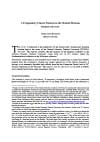
 Télécharger cet article au format pdf
Télécharger cet article au format pdf 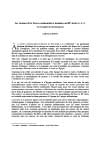
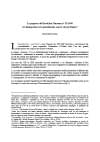
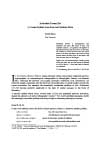
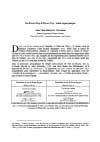
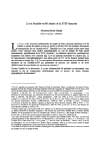
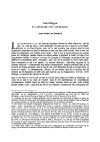
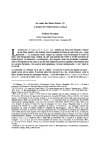
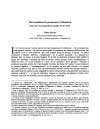
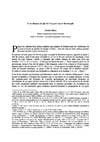
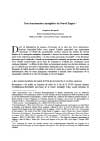
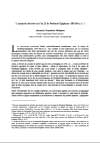
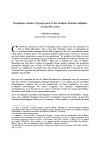
 ) ? »
) ? »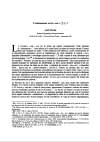

 ,
,  »
»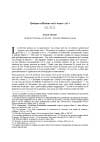
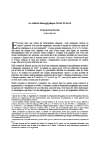





















 Contact
Contact
 Abonnez-vous !
Abonnez-vous ! Équipe Égypte Nilotique et Méditerranéenne
Équipe Égypte Nilotique et Méditerranéenne UMR 5140 « Archéologie des Sociétés Méditerranéennes » (Cnrs)
UMR 5140 « Archéologie des Sociétés Méditerranéennes » (Cnrs) Université Paul Valéry - Montpellier III
Université Paul Valéry - Montpellier III